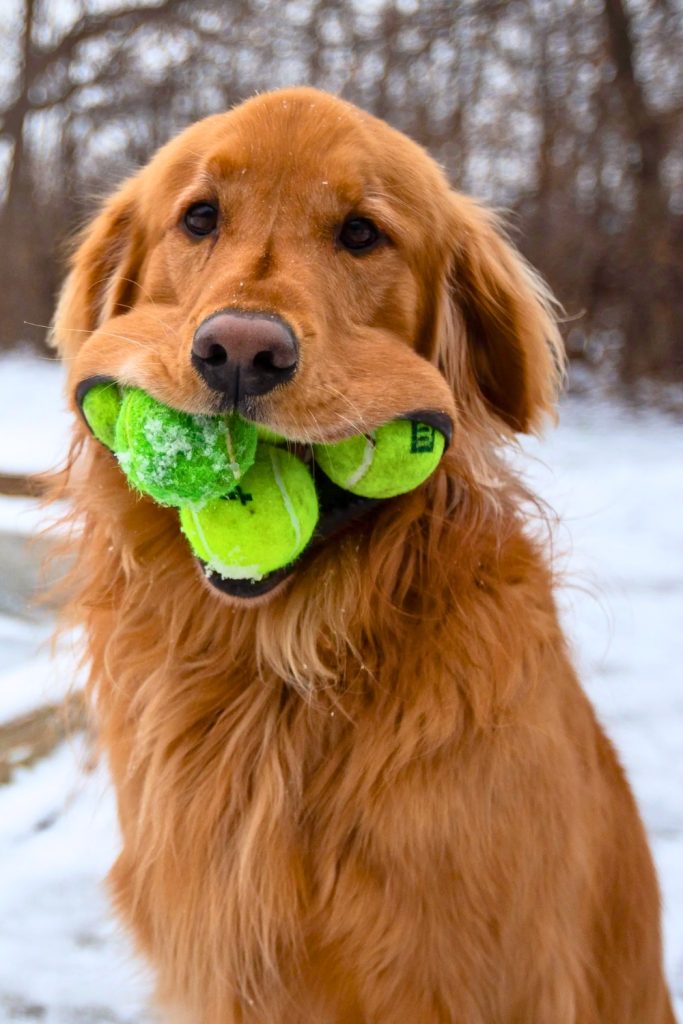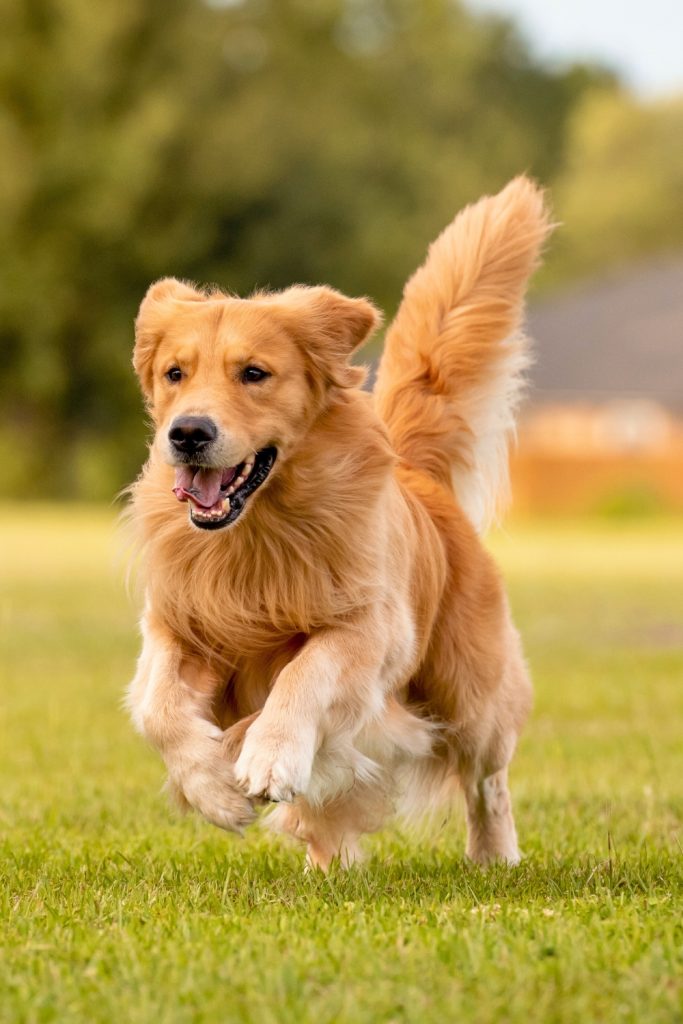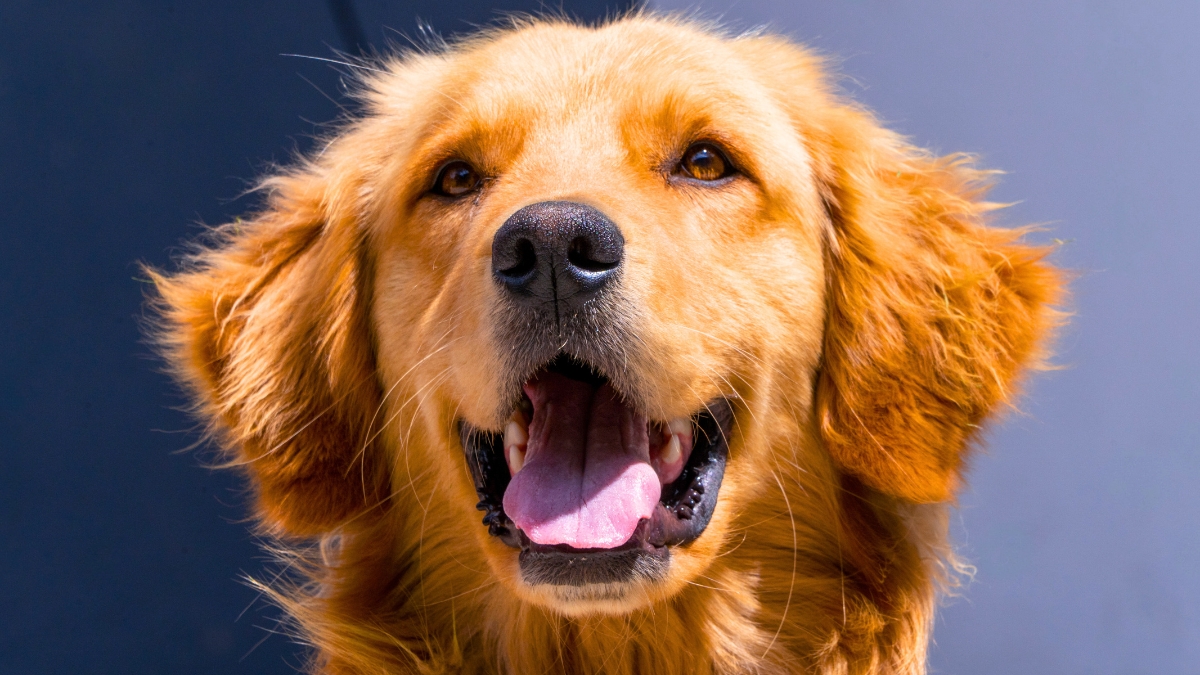Golden Retrievers are one of the most beloved dog breeds worldwide, known for their friendly and loyal nature. But when it comes to male Golden Retrievers, there are some interesting quirks and behaviors that may surprise you.
Whether you’re already a proud owner or considering bringing one into your home, these facts will give you a deeper understanding of what makes male Golden Retrievers so unique.
- Male Golden Retrievers tend to mature slower than females, often retaining their playful puppy behavior until around age three or four.
- Neutering male Golden Retrievers can have significant impacts on their health, including an increased risk of obesity and joint problems if done before one year of age.
- Male Goldens exhibit some quirky behaviors, like trying to pee higher on objects to assert dominance and humping as a form of play or dominance.
1. Male Golden Retrievers Are More Likely to Sniff Other Dogs’ Butts
All dogs use their noses to learn about their environment, but male Golden Retrievers take this to another level. They’re more inclined to sniff other dogs’ butts compared to their female counterparts.
While this behavior might seem odd to us, it’s a natural part of how dogs communicate and learn about each other.
Male Goldens, in particular, seem to be more curious about their canine friends, which is why they often engage in this behavior more frequently.
2. Humping: A Natural (But Sometimes Embarrassing) Behavior
One of the most surprising things about male Golden Retrievers is their tendency to hump. You might be shocked to find that even an eight-week-old puppy can start humping toys, other puppies, or even your leg! At this young age, humping is typically just part of their play style.
However, as they mature and their hormones kick in, this behavior can become more sexually motivated.
Even after being neutered, some male Goldens might still hump other dogs, stuffed toys, or even people. They may do it out of excitement, a desire to play, or as a way to assert dominance.
If this behavior becomes problematic, it’s essential to redirect their attention and limit opportunities for humping. For persistent issues, consulting a professional trainer is recommended.
3. The High-Peeing Habit: Asserting Dominance in a Unique Way
Male Golden Retrievers have some peculiar peeing habits. While both male and female Goldens mark their territory by peeing on things, males often try to pee as high as possible on objects like bushes or fire hydrants.
This behavior is a way for them to signal to other dogs that they’re a “big dog“.
Interestingly, if a male Golden detects another dog’s pee at a high spot, he might try to pee even higher. Some Goldens will go to great lengths, sometimes even toppling over, to achieve this.
Younger puppies usually don’t lift their legs until they’re more mature, and neutered males may lift their legs less frequently. Still, the high-peeing behavior remains a quirky and endearing trait of male Golden Retrievers.
4. Male Goldens Mature Slower Than Females
Golden Retrievers are often described as “forever puppies” because of their playful and youthful demeanor. However, if you have a male Golden, expect an even longer puppyhood.
Male Goldens tend to mature slower than females, meaning they retain their goofy, bouncy, and energetic behavior well into their third or fourth year.
This slow maturity can make potty training a bit more challenging, as young male puppies may have shorter attention spans.
Patience and consistent training are key during this period. If you’re struggling with potty training, consider downloading a potty training cheat sheet or consulting a trainer for additional tips.
5. Barking: Male Goldens Are Louder But Less Frequent Barkers
If you’re not a fan of barking, you might be concerned about bringing a male Golden Retriever into your home. However, while male Goldens are known to have louder barks than females, they typically bark less often.
This can actually be an advantage, as a loud bark can serve as an effective alarm system and deter potential intruders.
One male Golden Retriever named Charlie from Australia even holds the world record for the loudest bark ever recorded by a dog.
So, while their barking might be powerful, you can rest assured that it’s not something you’ll have to deal with constantly.
6. The Tennis Ball World Record Holder
Golden Retrievers are famous for their love of retrieving, and one male Golden has taken this to an impressive level.
Finley, a Golden from upstate New York, holds the world record for the most tennis balls held in a dog’s mouth at one time—an astounding six balls!

This fun fact not only highlights the breed’s love for play but also their determination and jaw strength.
If you have a male Golden, you’ve probably noticed their obsession with carrying objects in their mouths, especially tennis balls.
This behavior is deeply ingrained in their retriever instincts and can be a great way to bond with your dog through play.
7. Incredible Sense of Smell
Male Golden Retrievers have an extraordinary sense of smell, and when it comes to detecting a female in heat, they’re almost unbeatable. A male Golden can smell a female in heat from up to three miles away.
This impressive olfactory ability is driven by pheromones released by the female, which signal that she’s ready to mate.
If you have an intact (not neutered) male Golden, it’s crucial to ensure your yard is secure and that he’s always on a leash when outside.
The three-mile detection range is significant, and you wouldn’t want your dog wandering off in search of a mate.
8. Popular Male Golden Retriever Names
When it comes to naming your male Golden Retriever, “Cooper” is currently the most popular choice.
In a database of millions of pet parents, Cooper topped the list of names for Golden Retrievers, with Charlie and Max also being popular choices. Here’s the top 10:
- Cooper
- Charlie
- Max
- Tucker
- Leo
- Milo
- Murphy
- Buddy
- Maverick
- Finn
Naming your dog is an important part of the bonding process, and choosing a name that reflects your dog’s personality or your interests can make it even more special.
9. Male Goldens Are Bigger Than Females
Male Golden Retrievers tend to be larger than their female counterparts. According to the American Kennel Club (AKC) breed standard, male Goldens typically stand between 23 to 24 inches tall and weigh between 65 to 75 pounds.
In contrast, females usually stand between 21.5 to 22.5 inches tall and weigh between 55 to 65 pounds.
If you prefer a smaller dog, a female Golden might be a better choice. However, if you’re okay with a larger, more robust companion, a male Golden Retriever could be the perfect fit for your home.
10. Neutering and Its Impact on Health
One of the most critical facts to consider if you have or are planning to get a male Golden Retriever is the impact of neutering on their health.
Studies have shown that neutering male Goldens can increase the risk of certain health issues, particularly if done before they reach one year of age.
Neutered male Goldens are 50% to 100% more likely to become overweight or obese compared to those that are not neutered.
This is a significant concern because Golden Retrievers are already prone to joint problems and heart issues, which can be exacerbated by obesity.
Additionally, neutering before one year of age has been linked to a higher incidence of hip dysplasia and other joint disorders.
One study found that Goldens neutered before six months of age had four to five times the incidence of joint problems compared to intact males.
Additionally, early neutering has been associated with an increased risk of certain cancers, such as lymphosarcoma, in male Goldens.
However, waiting until your Golden is at least one year old before neutering can significantly reduce these risks.
It’s important to discuss the timing of neutering with your veterinarian to ensure the best health outcome for your dog.
FAQs About Male Golden Retrievers
1. Why do male Golden Retrievers mature slower than females?
Male Golden Retrievers naturally take longer to mature, often retaining their puppy-like behavior until they are three or four years old. This slower maturity rate is typical for the breed and requires patience during training.
2. Is it normal for my male Golden Retriever to hump objects and people?
Yes, humping is a common behavior in male Golden Retrievers. While it can be part of play or an attempt to assert dominance, it’s important to train them to stop if it becomes problematic.
3. How can I prevent my male Golden Retriever from becoming overweight after neutering?
To prevent weight gain, monitor your dog’s diet closely and ensure they get plenty of exercise. Discuss with your vet the best diet plan and exercise routine for your dog post-neutering.
4. What should I do if my male Golden Retriever barks too much?
If barking becomes excessive, you can work on training techniques to reduce it. Providing mental stimulation and ensuring your dog is well-exercised can also help minimize unnecessary barking.
5. Are male Golden Retrievers more prone to health issues than females?
Male Golden Retrievers are prone to certain health issues, particularly if neutered before one year of age. However, both males and females have their own unique health considerations that should be monitored.

Male Golden Retrievers are full of surprises, from their quirky behaviors to their health considerations. Understanding these unique traits can help you be a better pet parent and ensure that your furry friend lives a happy, healthy life.
Whether you’re dealing with a humping habit, a loud bark, or the challenges of a slow-maturing puppy, knowing what to expect can make all the difference in your journey with a male Golden Retriever.
